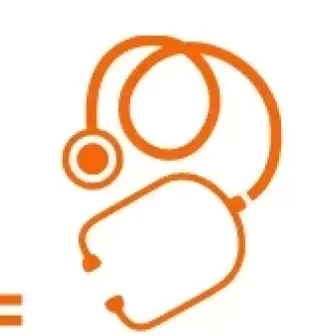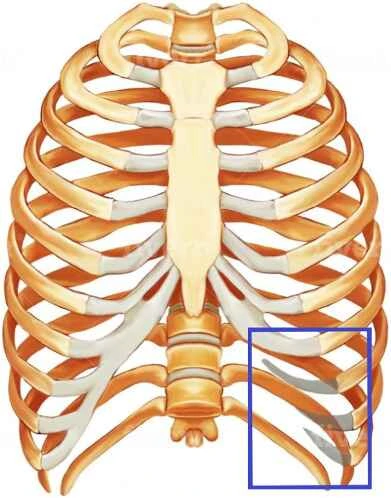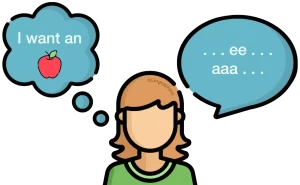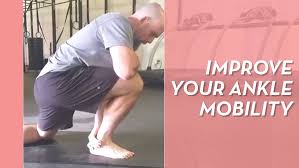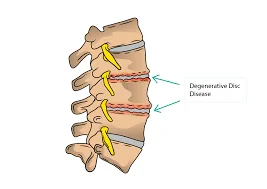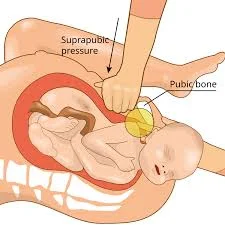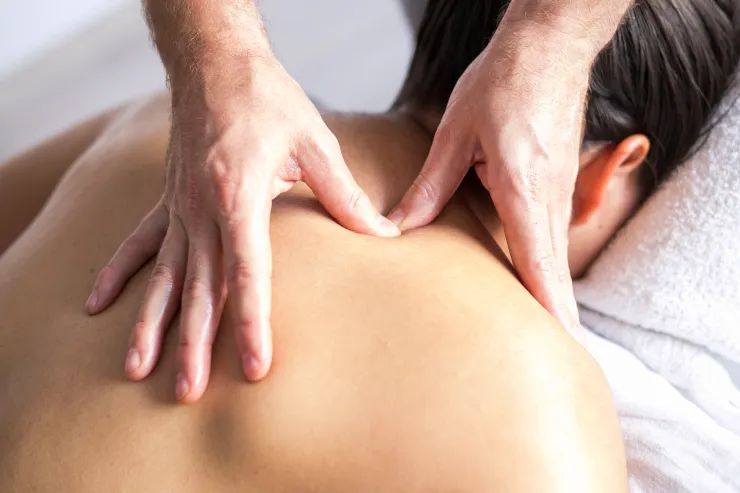Slipping Rib Syndrome
What is a Slipping Rib Syndrome?
Slipping Rib Syndrome is a condition where the lower ribs (typically the 8th, 9th, or 10th) become hypermobile due to weakened or damaged ligaments connecting them to the rib cage.
This can cause the rib to slip or move excessively, leading to sharp, intermittent pain in the chest or upper abdomen, often worsened by certain movements or deep breathing. Diagnosis can be challenging, and treatment options range from conservative management, such as physical therapy and pain relief, to surgical intervention in severe cases.
Overview
The hallmark of slipping rib syndrome (SRS) is pain in the upper abdominal or lower chest area caused by intercostal nerve impingement due to abnormal false rib movement (8–12) associated with unstable coastal cartilaginous attachments.
There are numerous names for slippery rib syndrome, including:
- Clicking rib
- Displaced ribs
- Rib tip syndrome
- Costal margin syndrome
- Floating rib syndrome
- Painful rib syndrome
- Slipping-rib-cartilage syndrome
- Gliding ribs
- Traumatic intercostal neuritis
- Twelfth rib syndrome
- Cyrix syndrome
- Endochondral subluxation, among others.
A little-known cause of intermittent muscular chest pain is slipping rib syndrome. It begins abruptly and intensely and then gradually lessens. It occasionally makes a popping or clicking sound.
It occurs when the cartilage connecting two of your lower ribs becomes unstable or loose. When one of the ribs slips in and out of place, it irritates your intercostal nerve. When the sides of your ribs move a bit more than usual, you may have pain in your upper abdomen or lower chest, which is known as slipped rib syndrome.
Ribs are the bones that surround your upper torso the middle of your chest. They serve as a link between your spine and breastbone. There are numerous names for slipping rib syndrome. Displaced ribs, clicking rib syndrome, floating rib syndrome, gliding rib syndrome, rib-tip syndrome, and Cyriax syndrome are just a handful of these.
The medical term for this condition is interconal subluxation. A subluxation occurs when a joint partially dislocates. The cartilage (chondral) tips of your lower ribs attach to the rib above at your interconal joints.
Relevant Anatomy
Ribs come in three varieties:
- The true ribs, which are the first seven, are joined to the sternum by cost sternal joints and ligaments.
- False ribs (the eighth to tenth) are ribs that are joined to one another by a weaker cartilaginous or fibrous band. The ribs that aren’t joined to the sternum or one another (the 11th and 12th floating ribs)
- The disease results from the anterior ends of the false rib costal cartilages being hypermobile, which frequently causes the affected rib to slide beneath the superior neighboring rib. A sprain of the lower costal cartilage, a strain of the intercostal muscles, an irritation of the intercostal nerve, or general inflammation in the affected area might result from this slipping or movement. They are more mobile and more vulnerable to shock because of their poor relationship. Since the posterior thoracic region is a closed system, anterior rib hypermobility is similarly likely to result in issues there.
Epidemiology
It is regarded as an uncommon condition that causes around 5% of all primary care musculoskeletal chest pain. This relatively uncommon but known cause of recurrent lower chest and upper abdominal pain in teenagers can occur at any age, but it is more common in middle-aged women.
Although it primarily affects middle-aged persons, reports of it have been made in people as young as 7 and as old as 86.
Pathophysiology
The ends of the ribs curl up inside and press against the intercostal nerves due to subluxation of the rib tips caused by disturbed articulation. The pain is caused by the impingement, which repeatedly irritates the intercostal nerves. It is caused by the costal cartilage slipping, which causes a false rib to shift and pin beneath the nearby superior rib, irritating the nerves.
Causes
This syndrome typically affects the bottom portion of your rib cage, namely the eighth to tenth ribs (sometimes referred to as false ribs). The sternum is not attached to these ribs, which are held together by fibrous tissue or ligaments, which aid in their stability. Due to the relative weakening of the ligaments, the ribs may move a bit more than usual, which can be painful.
It’s unclear exactly what causes slipping rib syndrome. Although cases of slipping rib syndrome have been documented without any significant injuries, it may develop with trauma, injury, or surgery.
It is thought to be caused by hypermobility of the ligaments or the costochondral rib cartilage, specifically ribs 8, 9, and 10. These three ribs are joined to one another by loose fibrous tissue rather than the sternum. They are referred to as fake ribs at times. They are therefore particularly vulnerable to trauma, damage, or hypermobility.
This movement or slipping rib syndrome causes pain and inflammation by irritating the nerves and possibly straining certain nearby muscles.
The following circumstances can lead to ribs slipping:
- Direct trauma.
- Indirect trauma from twisting, or jerking movements.
- Muscle tissue attached to the ligaments degenerating.
- A severe and continuous cough.
The following factors may contribute to the condition:
- Chest injury sustained while participating in contact sports including football, ice hockey, and wrestling.
- A direct injury to your chest or a fall
- Quick twisting, pushing, or lifting movements, such as swimming or baseball tossing
- The surrounding muscles, nerves, and other structures are compressed when the ribs move. The area becomes inflamed and painful as a result.
- Congenital anomaly of the chest wall
- The breakdown of the cartilage part or connective junction of the rib
- Hypermobility of the false ribs’ costal cartilages
Although it can happen at any age, middle-aged adults are more likely to have sliding rib syndrome. Compared to men, women can be more affected.
The following symptoms are indicative of slipping rib syndrome:
- Severe pain above the costal edge in the upper abdomen or lower chest, primarily at the height of the eighth, ninth, and tenth ribs (false ribs).
- A location for a tender on the costal margin
- Reproduction of the pain through external factors or by applying pressure to the delicate spot
- Although the signs and symptoms are often unilateral, people have occasionally reported bilateral pain.
Signs and symptoms
The disease typically affects one side. On rare occasions, it might happen on both sides. Among the symptoms are:
- Severe upper abdominal or lower chest pain. With time, the pain may subside and return.
- A sound like popping, clicking, or slipping.
- Pain when the affected part is compressed.
- Lifting, twisting, bending, coughing, and laughing can all exacerbate the pain.
- Pain in the lower anterior chest wall and upper abdomen.
- Pain on the sides of your back just below the rib cage
- Sensitivity to the impacted coastal margins
- Periodically experiencing a strong, stabbing pain in the back or upper abdomen, which is followed by a dull and throbbing feeling.
- Difficulty while breathing
- Symptoms get worse when you bend, lift, cough, sneeze, breathe deeply, stretch, or roll over in bed.
- Interestingly, she discovered that using a swing machine was particularly likely to cause pain and that specific movements, including sitting and leaning forward, preceded pain.
The following distinguishing features of slipping rib syndrome pain can be utilized to diagnose the condition:
- Sharp, stabbing pain that comes and goes, followed by a dull, continuous agony that can linger for hours or weeks.
- Pain can range in intensity from a little annoyance to moderately severe pain that interferes with everyday tasks.
- It has also been reported to radiate to the chest or the same level in the back from the costochondral region.
- Exacerbated by specific positions and motions, such as coughing, walking, carrying weights, bending, twisting the trunk, lifting, extending, reaching, driving, getting out of a chair, lying or turning in bed, or coughing.
- May have an impact on sports that require deep breathing and trunk motions, especially swimming, jogging, horseback riding, and arm abduction. Patients may experience pain that prevents them from participating in sports.
- Several somatic and visceral symptoms, such as biliary or renal colic, may also result from the intimate relationship between the sympathetic nervous system and the intercostal nerves. Visceral innervation converges at the same spinal cord levels as sliding ribs and intercostal nerves.
Risk factor
The chance of getting SRS can be increased by the following factors:
- The pain is caused by physical trauma from overuse.
- Sudden flexion or extension, prolonged weight bearing on one side, or physical activity like swinging a bat, tossing a ball, or swimming vigorously.
Diagnosis
In addition to determining whether the patient has had recent trauma (which is not always present), constrained posture, or prior abdominal surgery, the physiotherapist looks for a correlation between specific movements or postures and the severity of pain and replicates the symptoms (e.g., pain, clicking).
- Palpation: Tenderness above the costal edge is the most typical physical examination finding in cases of slipping rib syndrome. By palpating, the physiotherapist can replicate chest pain.
- With specific movements, a painful click may occasionally be felt above the tip of the affected costal cartilage.
- The Hooking maneuver is a successful test.
The symptoms of slipping rib syndrome are similar to those of other illnesses, making diagnosis challenging. To determine when your symptoms began and whether anything you do exacerbates them, a doctor will first ask about your medical history. Before you begin feeling chest or abdominal pain, your doctor will want to know what you are doing and what activities you engage in.
The hooking maneuver is a test used to diagnose slipping rib syndrome. Your doctor will hook your fingers under the rib borders and move them back and up to conduct this test.
The primary problem is diagnosing SRS, which is determined by a thorough patient history, physical examination, and awareness of its existence. Nonetheless, the subsequent methods might be employed for diagnosis:
- Hooking move: Create the symptoms again. The doctor pulls the hand anteriorly while placing his or her fingertips beneath the lower costal border in this rather easy clinical examination. A positive test result is indicated by pain or clicking.
- A positive hooking maneuver might be followed with intercostal nerve blocks to confirm the diagnosis.
- Valsalva, coughing, twisting, crushing, and push exercises can all be used in conjunction with dynamic ultrasonography of the ribs to detect SRS.
Investigation
- Given the nature of the pain and the numerous different chest or abdominal illnesses that can produce pain in this area of the body, diagnosing Slipped Rib Syndrome can frequently be challenging. To evaluate and look into Slipped Rib Syndrome, it is crucial to see a physician who is knowledgeable about the issue. Tenderness in the area may be relieved by a clinical examination, and sometimes the hypermobile rib tip can be palpated, which can cause pain if moved (the hook maneuver).
- Patients may have undergone several tests already, and chest CT scans and even MRIs are frequently ineffective. A radiologist with experience in Slipped Rib Syndrome must perform dynamic ultrasound, which frequently enables the radiologist to show excessive movement of the affected rib tip.
Differential Diagnosis
Numerous disorders are included in the list of possible causes of slipping rib syndrome.
- Cholecystitis
- Esophagitis
- Gastric ulcers
- Stress fractures
- Muscle tears
- Pleuritic chest pain
- Bronchitis
- Asthma
- Costochondritis
- Appendicitis
- Coronary heart disease
- Metastatic bone disease.
- Peptic ulcer
- Ureteric colic
- Pancreatitis
Treatment
In certain instances, slipping rib syndrome goes away on its own without medical intervention; if not, the patient’s symptoms will determine the best course of action. When treating SRS, various conservative and non-conservative treatment philosophies might be considered.
Non-Conservative treatment
Surgery could be advised if the illness worsens or continues to cause excruciating pain. The following surgical techniques are possible:
Adult Slipped Rib Syndrome: A Minimally Invasive Treatment Without Costal Cartilage Excision.
In our initial experience, the rate of recurrence was considerably reduced by vertical rib plating with bioabsorbable plates.
Things Not to Do
Reassurance that the illness is benign together with information and guidance on avoiding certain postures Avoid the following activities:
- Heavy lifting.
- Twisting.
- Pushing.
- Pulling.
Intercostal Nerve Blocks
The following actions can be taken to trigger the symptoms if the pain persists after taking a pain reliever:
- An injection of corticosteroids to help lessen the swelling
- To lessen pain, an anesthetic is injected into the intercostal nerve during an intercostal nerve block treatment.
Conservative Treatment
Conservative treatment includes the following:
- Rest.
- Avoiding strenuous activities.
- Using cold or heat to treat the affected area.
- Oral medications like NSAIDs.
- Topical analgesics.
- Acetaminophen (Tylenol)
- NSAIDs, or nonsteroidal anti-inflammatory medicines, include naproxen (Aleve) and ibuprofen (Advil, Motrin IB).
- Physical Therapy.
- Nerve blocks.
- Local anesthetic injections
- Manipulation of the ribs into place
Surgical Options for Slipping Rib Syndrome
Sutured repair
- The physician stitches the ribs together in this repair. This procedure produces good results at first, but as symptoms reoccur, the suture repairs deteriorate over time.
Costal cartilage excision
- This entails cutting off the cartilage that caused the pain, but frequently, rib motion causes the pain to return. The ribs may be stabilized using a bridge plate.
Costal margin reconstruction
- This is the most recent method that lessens the need for revision surgery while providing pain relief. There may be less need for painkillers after this surgery. To stop the ribs from pressing on the nerve in the back after it has been taken out, the cartilage that is causing the nerve impingement is removed and some of it is auto-transplanted between the ribs.
- A dissolvable plate is used to anchor the cartilage and ribs, allowing the cartilage to mend in place while maintaining sufficient flexibility for regular breathing.
Physical Therapy treatment
Manual therapy
- Electric stimulation and costovertebral joint manipulation can help control the pain, but there is likely no long-term solution.
- Rib tape might offer a brief sense of relaxation. Using a manual superior compression force applied through the postero-lateral aspect of the rib cage, determine the size and direction of taping. Now instruct the patient to rotate or inhale deeply. The tape should be applied at that level if the patient reports a noticeable improvement in symptoms.
Rib mobilization with movement (MWM)
- Rib mobilization with movement (MWM), as suggested by Brian Mulligan. Both pain threshold and range of motion are assessed. Above the uncomfortable area, a cranial glide is performed over the lateral aspect of the rib. The patient is requested to rotate once more as ROM and pain are assessed while maintaining this rib elevation (unloading). A rib above or below is used to repeat the technique if nothing changes. MWM is applied ten times to a rib at a particular level if it is determined to lessen or completely eradicate the pain.
Home care program
- Instructions: Actively rotate in the painful direction while raising the rib with the web space of one hand. Repeat as often as necessary. To reduce protective muscle spasms and local inflammation, the inflamed costovertebral joint should be moved as frequently as possible without causing pain.
Which ribs are affected by slipping rib syndrome?
Your ribs have numbers that run from top to bottom, totaling twelve. Ribs eight through ten are affected by sliding rib syndrome. Because they don’t connect to the top of your breastbone (sternum) directly, these are known as your “false ribs.”
Each false rib, on the other hand, joins to the rib above it. Your interchondral joints are these cartilage-based attachment points. One of your artificial ribs will slip out of place if one of these joints weakens.
Slipping rib syndrome is mislabeled as “floating rib pain” or “floating rib syndrome.” Your bottom ribs eleven and twelve are your “floating ribs.” There are no endochondral joints on these ribs.
Because they solely adhere to your spine and not to your breastbone or other ribs, they are known as “floating ribs.” These ribs are unable to “slip” in the same manner. However, the tissues surrounding them could hurt.
Conclusion
- A thorough diagnostic evaluation is occasionally conducted for the frequently underdiagnosed condition known as “slipping rib syndrome.”
- A rapid and easy diagnosis and the avoidance of months or years of persistent problems are possible with knowledge of the slipping rib syndrome.
- The impingement may result in excruciating, ongoing pain and a slipping sensation that is triggered by many motions.
- In addition, it may irritate the intercostal nerve or damage to nearby structures.
- Understanding the syndrome is crucial since it can result in an easy and speedy diagnosis.
- Pain from slipping ribs can be severe, perplexing, and terrifying, particularly if your doctor is unable to explain. Having persistent pain without a diagnosis or treatment plan is extremely frustrating.
- Thankfully, slipping rib syndrome is becoming more widely known. Despite all of its mystery, it is merely an anatomical problem that may be fixed surgically; it is not a fatal nor incurable disease.
FAQs
How can slipping rib syndrome be resolved?
Put ice or heat where the pain is. Wrap a handkerchief around the ice.
Avoid actions like heavy lifting, twisting, pushing, and tugging that exacerbate the pain.
To keep the ribs stable, put on a chest binder.
Get advice from a physical therapist.
My rib keeps falling out of position; why is that?
When the intercostal cartilage between the ribs deteriorates and permits movement, it can lead to slipping rib syndrome. Hypermobility is a common term used to describe this movement. The cartilage may move as a result of physical harm, birth defects, or an unidentified cause.
Can someone who has a slipped rib still work out?
Resting the affected area and avoiding painful activities are usually the first steps in rehabilitation for this disease. This can entail avoiding activities that strain the rib cage and taking a break from sports or exercise.
How can someone who has a slipped rib sleep?
Use painkillers, cold and heat therapy, and rest to ease muscle soreness. To maintain your upper body supported and aligned when you sleep with intercostal muscle strain, you must arrange yourself correctly. Use a pillow to reduce pressure on the damaged area while you’re lying down, and take slow breaths.
Is a protruding rib considered normal?
A muscle weakening could be the cause of your rib cage’s minor protrusion or unevenness. Your rib cage is largely held in place by your abdominal muscles. One side of your rib cage may protrude or sit unevenly if the muscles on one side of your body are weaker.
Is it possible for the slipping rib condition to resolve itself?
Corticosteroids, physical therapy, and painkillers are all possible forms of treatment. However, it could disappear on its own in certain situations. When the cartilage on a person’s lower ribs slides and shifts, it can cause pain in the upper abdomen or chest.
How can flared ribs be fixed?
Although there are several techniques to address rib flare, muscle-strengthening activities are the most successful. If you want to improve the general health of your spine and posture, you must be consistent, committed, and determined. Rib flare can be resolved with breathing exercises, stretching, and massage.
Is massaging broken ribs acceptable?
Limit activities that could make the broken rib pain worse. Doctors will recommend complete rest. Using a bag of frozen peas or ice wrapped in a cloth, gently massage the affected area for 15 to 20 minutes, four to five times a day. This will lessen the pain and edema.
Reference
- Slipping rib syndrome. (2024, November 12). https://www.ucsfhealth.org/medical-tests/slipping-rib-syndrome
- Cafasso, J. (2023, April 21). Slipping rib syndrome. Healthline. https://www.healthline.com/health/slipping-rib-syndrome#treatment
- Slipping rib syndrome. (n.d.). Baylor College of Medicine. https://www.bcm.edu/healthcare/specialties/the-lung-institute/thoracic-surgery/slipping-rib-syndrome
- Wikipedia contributors. (2024a, February 29). Slipping rib syndrome. Wikipedia. https://en.wikipedia.org/wiki/Slipping_rib_syndrome
- Rib injury clinic. (n.d.). https://www.ribinjuryclinic.com/conditions/slipped-rib-syndrome/
